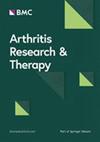A 6-year prospective study on work participation and the associated factors in Dutch patients with systemic lupus erythematosus (SLE)
IF 4.6
2区 医学
Q1 Medicine
引用次数: 0
Abstract
Previous studies showed that many patients with SLE do not have paid work. However, having paid work is important for self-esteem, social contacts and income. It is therefore important to understand the characteristics contributing to work status and in particular identifying modifiable variables to help patients with SLE and their employers to maintain work. The objective of this study is to investigate associations of demographic, disease-related and work characteristics with having and maintaining paid work for ≥ 5 years in patients with SLE over a six-year period. All patients diagnosed with SLE, independent of disease duration and under treatment in Amsterdam UMC location VUmc or Reade were invited to participate in the longitudinal Amsterdam SLE cohort (2007–2018). Demographic, disease-related and work characteristics of these patients were analysed. Baseline was defined as the time of study entrance. Generalized Estimating Equations with logit link function were used to identify associations between these characteristics on having paid work. Logistic regression was used to study associations with maintenance of work and work disability. At baseline, 52% of patients (114/220) were employed, which decreased to 46% (73/157) after six years. The main reported reason for unemployment was because of SLE-related symptoms (63%). Among the 106 patients who were unemployed at baseline, 16% (17/106) gained work during follow-up of whom 47% (8/17) also maintained work. Of the 114 patients employed at baseline, 29% (33/114) remained employed throughout the entire six-year follow-up period. Having paid work over time was associated with younger age, higher level of education, shorter disease duration, lower organ damage and supervisor support. Maintaining employment for ≥ 5 years during follow-up was associated with regular working hours, skill discretion, decision authority and decision latitude. A longer disease duration was associated with work disability at baseline. This study shows that alongside demographic and disease-related characteristics, also work characteristics are associated with having and maintaining paid work in SLE patients. These characteristics should be taken into consideration when developing interventions to improve sustainable employability in patients with SLE. 1. The unemployment rate in SLE patients is high (54%) and increased over time during follow-up. 2. Maintaining work is associated with more supervisor support, regular working hours, skill discretion, decision authority, decision latitude. 3. Of the unemployed SLE patients at baseline, 16% started working of whom 47% maintained work.荷兰系统性红斑狼疮(SLE)患者6年工作参与及相关因素的前瞻性研究
先前的研究表明,许多SLE患者没有有偿工作。然而,有报酬的工作对自尊、社会交往和收入都很重要。因此,了解影响工作状态的特征,特别是识别可修改的变量,以帮助SLE患者及其雇主维持工作是很重要的。本研究的目的是调查人口统计学、疾病相关和工作特征与6年期间SLE患者有和维持带薪工作≥5年的关系。所有被诊断为SLE的患者,无论病程如何,均在阿姆斯特丹UMC所在地VUmc或Reade接受治疗,被邀请参加阿姆斯特丹SLE纵向队列研究(2007-2018)。分析这些患者的人口学特征、疾病相关特征和工作特征。基线定义为研究开始的时间。利用logit链接函数的广义估计方程来确定这些特征与有酬工作之间的关联。Logistic回归用于研究工作维持和工作残疾之间的关系。在基线时,52%的患者(114/220)被雇用,6年后下降到46%(73/157)。报告的主要失业原因是与语言障碍相关的症状(63%)。106例基线时无业的患者中,16%(17/106)在随访期间获得工作,47%(8/17)继续工作。在基线时接受治疗的114名患者中,29%(33/114)在整个6年随访期间仍接受治疗。长期从事带薪工作与年龄更小、受教育程度更高、疾病持续时间更短、器官损伤更小以及主管的支持有关。随访期间保持工作≥5年与正常工作时间、技能自由裁量权、决策权和决策纬度相关。较长的疾病持续时间与基线时的工作残疾有关。这项研究表明,除了人口统计学和疾病相关特征外,工作特征也与SLE患者的有偿工作有关。在制定干预措施以提高SLE患者的可持续就业能力时,应考虑到这些特征。1. SLE患者的失业率很高(54%),并且随着随访时间的推移而增加。2. 维护工作与更多的主管支持、固定的工作时间、技能自由裁量权、决策权和决策权有关。3. 在基线时失业的SLE患者中,16%开始工作,其中47%保持工作。
本文章由计算机程序翻译,如有差异,请以英文原文为准。
求助全文
约1分钟内获得全文
求助全文
来源期刊

Arthritis Research & Therapy
RHEUMATOLOGY-
CiteScore
8.60
自引率
2.00%
发文量
261
审稿时长
14 weeks
期刊介绍:
Established in 1999, Arthritis Research and Therapy is an international, open access, peer-reviewed journal, publishing original articles in the area of musculoskeletal research and therapy as well as, reviews, commentaries and reports. A major focus of the journal is on the immunologic processes leading to inflammation, damage and repair as they relate to autoimmune rheumatic and musculoskeletal conditions, and which inform the translation of this knowledge into advances in clinical care. Original basic, translational and clinical research is considered for publication along with results of early and late phase therapeutic trials, especially as they pertain to the underpinning science that informs clinical observations in interventional studies.
 求助内容:
求助内容: 应助结果提醒方式:
应助结果提醒方式:


